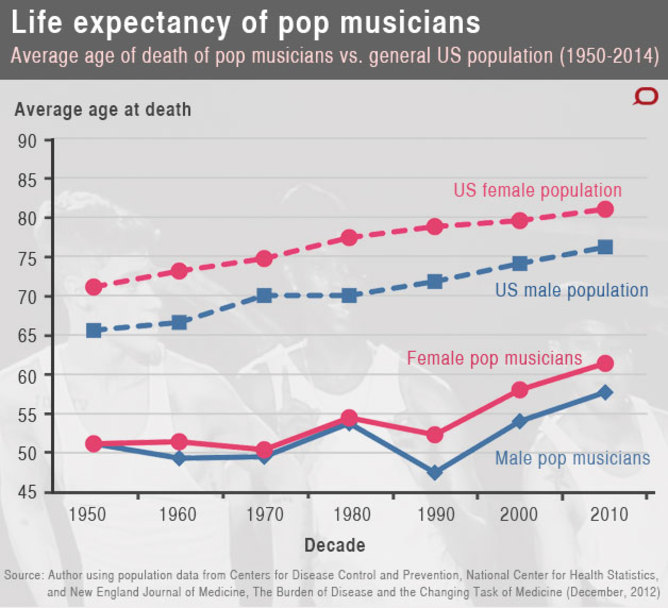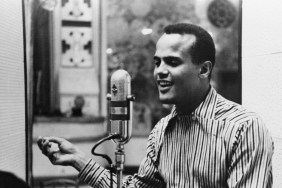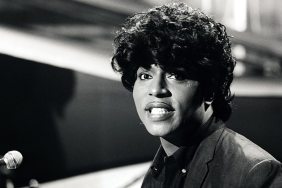Confirming suspicions we mostly already had, new research coming out of the University of Sydney suggests that musicians really do die young, with their lives ending up to 25 years earlier than those of their non-music-making counterparts.
According to the study, the early deaths of Tupac, Amy Winehouse, Jim Morrison, Lisa ‘Left-Eye’ Lopes, Janice Joplin, Jimi Hendrix and Kurt Cobain are not anomalies within the music industry. And not only are “pop stars” more likely to die early, they’re also between five and 10 times more likely to die an accidental death.
“The ‘pop-cultural scrap heap’, to borrow journalist Drew Magary’s term, is piled high with the dead or broken bodies of young musicians whose personal and musical aspirations collided with the aspirations of those occupying the commercial edifices erected around them,” writes professor of psychology and music, Diana Kenny, in the report on The Conversation.
“Many of those musicians end up feeling suffocated, caged and possessed by their minders, exploiters and fans. And many end up dead.” Dr Kenny studied the deaths of more than 13,000 musicians, predominately males from various genres, between the 1950s up to June 2014. She compared the statistics of their deaths to those in the general US population.
When averaged out, Dr Kenny found that the lifespan of a musician was up to 25 years shorter compared to someone in the wider population. The research also found that suicide rates were between two and seven times greater for musicians and homicide rates were up to eight times greater.
Speaking with the ABC Dr Kenny said that a situation exists in the music scene where “drugs and promiscuity” are celebrated along with the “valorisation of early death” and many young musicians “who are depressed and suicidal are attracted to these types of environments”.
“It is an interaction between their psychopathology – disrupted attachments, broken families, a lot of them didn’t finish school, felt like they didn’t fit in, and then they end up in the pop industry.”
One positive aspect of the study though found that those life expectancy gaps have narrowed in the present day. Accidental deaths peaked in the 1950s and ’60s and have gradually lessened since. Deaths by homicide and suicide both peaked in the 1990s.
Today, life expectancy for musicians is at its highest since the 1950s though, according to the research, it is still considerably lower than that of the general population. In order to rectify these gaps Kenny argues that the music industry must aim “to provide boundaries and to model and expect acceptable behaviour” while at the same time refraining from valorising “outrageous behaviour”.
“Those who make their livings from these young people need to learn to recognise early signs of emotional distress, crisis, depression and suicidality,” she writes, “and to put some support systems in place to provide the necessary assistance and care.”
For help or information on suicide prevention contact Lifeline on 131 114, or visit beyondblue.org.au.
Image via The Conversation:













